Intelligence, Access Control, and Investigation
Intelligent Security and Access Control
Today's cities face a broad spectrum of threats ranging from terrorism to rising crime rates, civil unrest, shootings, natural disasters, and other emergencies. To mitigate the impact of these situations, city officials demand real-time information and forecasts about what is happening in districts, neighborhoods, and neighborhoods. There is a growing impetus for the use of new and emerging technologies in the quest for safer and more efficient cities. In this context, integrated public infrastructure security solutions provide a comprehensive framework for a single, holistic operational view and access to intelligent monitoring with real-time visual, audio, and location information. These solutions help make cities safer by enabling authorities to prevent, manage and respond to potential risk scenarios effectively.
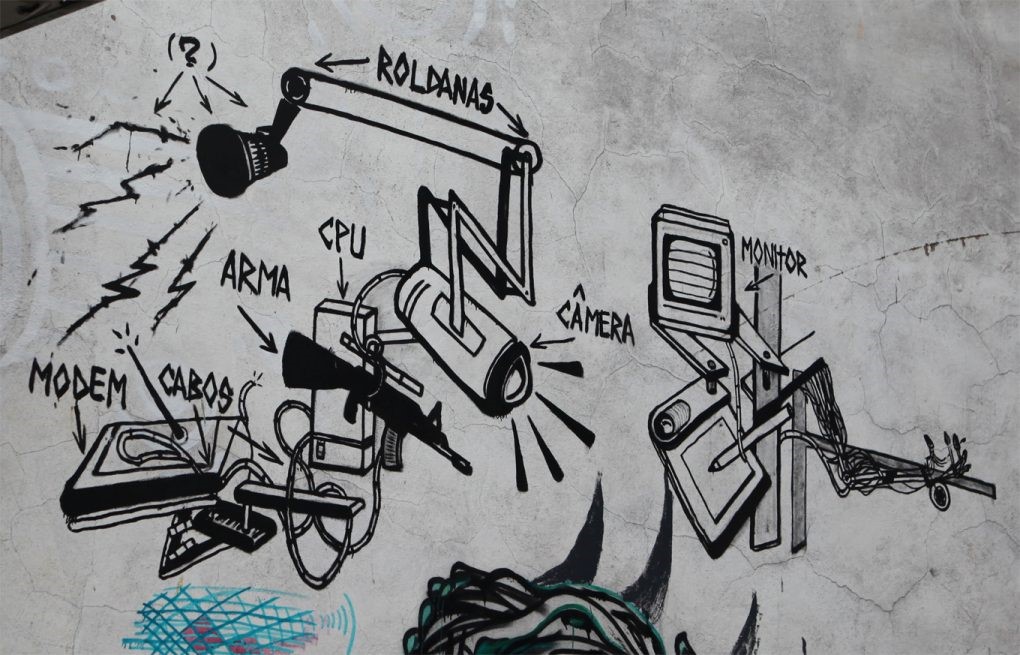
The explosion in city populations in recent years, driven by globalization and urbanization, has made cities an attractive target for violence and terrorism. According to a United Nations forecast, it is estimated that about 70 percent of the world's population will live in urban areas by 2050, with cities in Asia and Africa experiencing the greatest growth. Considering the sheer scale of people and infrastructure involved in confined places, it is becoming a huge challenge to monitor and keep cities safe around the world. The 2011 serial explosions in Mumbai, the infamous London transport network bombings, the numerous riots in Egypt, and the mass shooting spree in the US, including the shocking Sandy Elementary School shooting, have all accentuated the urgent need for a comprehensive security system. While governments around the world are investing billions of dollars in response to these events, they are largely focused on national defense strategies. Which brings us to those major questions on everyone's mind - are our cities doing enough to protect our citizens? Is the existing public safety infrastructure sufficient to deal with growing threats and vulnerabilities in our cities? How can we ensure quick and effective responses to potential threats and criminal acts?
Public safety requires a holistic approach - In recent times, the emergence of smart technologies such as unified communication and IP networks is increasingly driving the shift to a "safer city." At the core of this safe city is an underlying connection between various stakeholders, including law enforcement agencies and public and governmental bodies. With advances in technologies that allow for greater interoperability and seamless flow of information through unified networks, it has become very easy to collect the available data to craft coordinated responses. This framework also ensures that a common platform and a shared portfolio of solutions generate adequate analytical capacity for effective decision making and rapid response to critical situations. In line with this vision, there has been a growing trend as cities around the world adopt these technologies in pursuit of a safer city. In the United States, the Department of Homeland Security distributes billions of dollars annually as grants to state and county agencies to invest in modern video surveillance technologies.
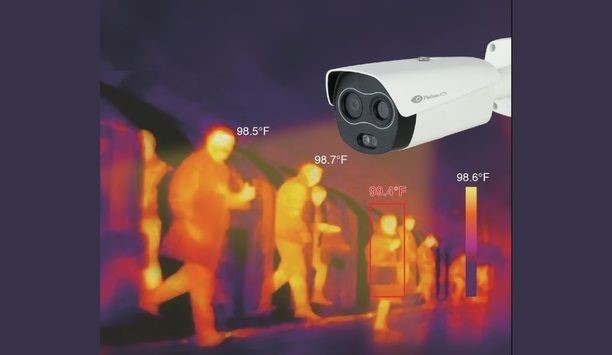
New York alone has more than one million CCTV cameras, while Chicago plans to have at least one surveillance camera interconnected with a centralized monitoring center on every street corner. London is home to more than 2 million CCTV cameras, strategically placed throughout the city. This system has recently been revamped to include a new range of scanners, biometric ID cards, CCTV systems with nameplate and facial recognition, disease-tracking capabilities, new police control centers and checkpoints.
The "Surat Safe City" initiative, was the first CCTV surveillance project based on the Public Private Partnership model in India. A total of 5,000 CCTV cameras were installed along 500 locations in the city of Surat, including entry and exit points of the city, major traffic intersections, and other sensitive areas. The ultimate goal of today's cities is to create a unified security fabric to ensure an effective response to any major emergency. At the heart of this is information technology that enables the seamless integration of various individual components into a complete, consolidated view of the city's security infrastructure.
Integrated solutions for a safe city - There are several challenges that local and state authorities face in ensuring high levels of physical security. These include significant manpower and associated costs, limited budgets, multiple and often legacy systems, and, most daunting, the lack of interoperability between these systems. With real-time visibility and rapid responses an absolute must in today's rapidly evolving cities, there is a strong need to move toward integrated security systems and centralized information. An integrated public safety system should ideally encompass three main elements - intelligent monitoring solutions, communication, and mobility. These aspects are interlinked by the fourth element, a Command and Control Center Solution (PSIM) to mitigate risks throughout the city environment, providing actionable intelligence and enabling rapid resolution of security incidents.
Monitoring Solutions
Video Surveillance and Analytics - There has been a growing shift to IP-based CCTV cameras, which offer significant advantages such as scalability, remote monitoring over the Internet, and easy classification of digital video files. These IP-based solutions also support intelligent video analytics that augment video surveillance systems with real-time detection and alerts for defined events.
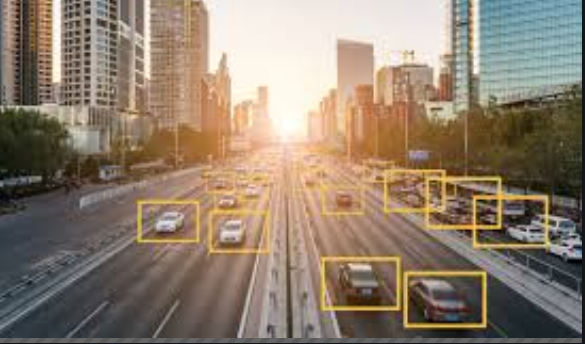
Collaborative Monitoring - Many cities often have surveillance systems deployed by multiple public and private facilities. A safe city solution with a collaborative framework can receive video feeds from these systems and subsystems to ensure real-time responses
Automatic Registration or License Plate Recognition (ANPR) - This surveillance solution uses optical character recognition on images to read license plates of vehicles. This is mainly used at borders or road signs to identify and cross-reference vehicles to a comprehensive vehicle database to provide actionable intelligence in case of vehicle theft etc.
Facial recognition system (FRS) - This solution is a computer application that automatically identifies or verifies a person from a digital image or a video frame from a video source. This solution uses a combination of eye zone extraction and facial recognition in neural network technology. Recognitions are independent of viewpoint and facial changes (glasses, beard and expression). The system has a short processing time and a high recognition rate of up to 100 faces per image / frame.
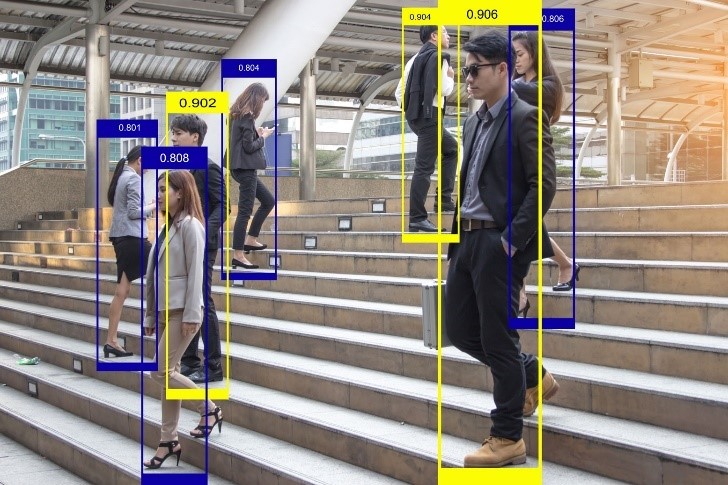
Communication Systems
Network Connectivity - Robust, reliable and scalable networks are required to enable converged communication. These connection points include cameras, data centers, Regional Command Centers, traffic command centers, police stations, and other critical government databases. In addition to terrestrial connectivity, satellite connectivity is required in data centers, command centers, and mobile vans, as legacy network systems are often the first casualty in the event of an incident or disaster.
Unified Communications Solution - This solution involves the messaging and call channel across heterogeneous networks and systems to provide guaranteed message delivery, efficient routing, security, and priority-based messaging.
Data Centers - Data centers are used to record video feeds for viewing at Command Centers and for future reference. These data centers host NVRs, servers and storage needed to record and process video feeds. Command and Control Centers, both at the regional and central level, will receive the necessary video feeds and alerts from the data centers.
Application Portfolio - This solution is built on open standards and a Service Oriented Architecture (SOA) to ensure seamless interoperability and integration to maintain law and order in a city. Some of the key components of the application portfolio include video management system, recording system, analysis system, GIS, and a custom dashboard for various categories of personnel. Custom applications can be created to integrate criminal database, RTO database, etc.
Mobility Solutions
Vehicle Mounted Camera - The vehicle has basic CCTV equipment, communications equipment and video display systems, and operator capability. The Mobile Video Van is maintained in a complete state of readiness and is capable of capturing and transmitting real-time video feeds of an incident.
Vehicle tracking system on GIS maps - GPS-based vehicle tracking of police vehicles, QRT vehicles, fire trucks, and ambulances enabled on GIS maps allows the command center operator to locate these vehicles accurately and easily in the event of a contingency. The operator can communicate with these vehicles through a unified communication system to report the location of the victim.
Command and Control Center Solution (PSIM) - This integrated solution enforces Standard Operating Procedures (SOP) and provides greater visibility into all security activities in a single, real-time view and helps government authorities implement and enforce rules and regulations. It enables situational awareness across your entire infrastructure by creating a unified, interactive intelligence picture, drawing data from all sensors, showing the location of patrols, and adding other relevant information such as video from different sources. This combined image is constantly updated and can be sent by the Control Center to all patrols, thus serving as a uniform basis for operational planning and task allocation. The physical security information management system (PSIM) operates as part of an overall incident cycle that integrates different security agencies. This cycle consists of four main phases - Plan, Detect, Respond, and Analyze - as shown in the diagram below.
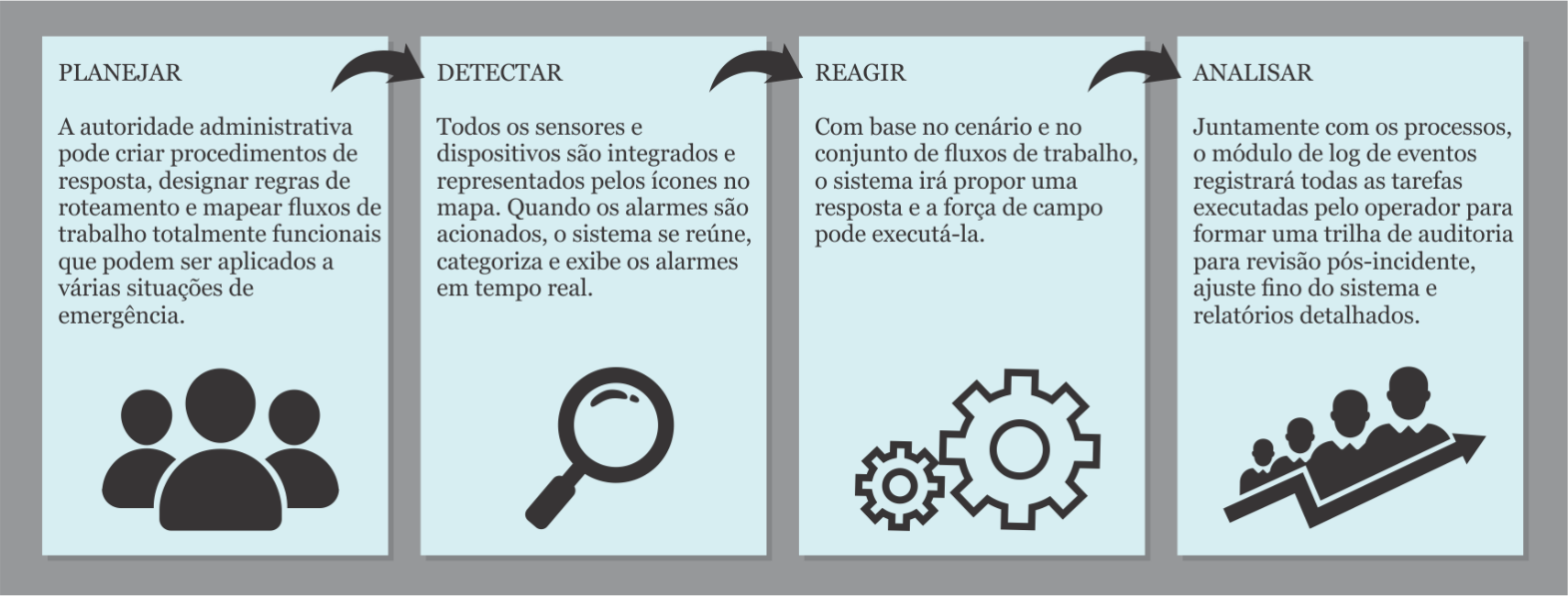
How the various stakeholders benefit
Government - Enhances the global reputation of the government's ability to promote safety and security in the state; multiple, highly responsive control center units that increase state efficiency; increases civilian and investor sector confidence in the government regarding safety and security aspects; and enables advanced security for VIP and government buildings, ministries and the VVIP public.
For the Command Control Center and other involved departments - Complete real-time information on activities and events in different areas of the city; instant exchange of intelligence reports between city surveillance centers and command and control centers; integration with the national multi-category database for effective decision support; open communication with all involved authorities at the click of a button; commands transmitted to the authorities involved and in turn to the control units - all in a matter of seconds; results of actions and decisions can be monitored live and follow-up actions can be taken immediately; citizen interaction units can be ordered to respond to a situation immediately; and traffic, rescue operations, first aid, etc. , can be controlled and monitored from remote locations.
For the public - Early identification of potential distress can be minimized or avoided and controlled; rapid government response to disasters and distress; assertive responses to emergency situations increases public goodwill toward the government; motivates industries to invest and run their businesses in a safe state; ensures free flow of traffic and improved safety, which will be appreciated by the public and industrialists; Citizens can interact with the surveillance center through a dedicated unit (Citizen Interaction Unit); and information on disturbances, violence, traffic, roadblocks, activities, events, large movements of people, warnings, messages, and security-related information can be provided to the public on a regular basis.
For investors - World-class intelligence infrastructures attract more investment; unauthorized access and damage to infrastructure can be prevented through proactive surveillance solutions; in addition to facilities and machines, people will also be protected from unexpected problems - this encourages investors to invest in the state; and damage to goods in transit, transaction hubs, warehouse, due to unrest or concern can be mitigated.
As seen, public safety is not a new activity, but the complexity and volume of threats that modern cities face today have necessitated the need for new resources. As governments around the world are increasingly adopting emerging technologies to protect public infrastructure, the concept of a "safer city" or "Smart Security" is expected to gain significant traction. An instrumental factor in making cities safe is an integrated platform in which various stakeholders and different security systems work together to provide continuous city surveillance to government authorities. The ultimate goal is to provide a safer environment and reduce crime levels by deterring potential offenders and assisting in crime detection. The ultimate goal of today's cities is to create a unified security fabric to ensure an effective response to any major emergency.
The above text is authored by Chockalingam Chidambaram.
Acsess Control
One of the outcomes of intelligent security systems is to perform access control. In the fields of physical security and information security, access control is the selective restriction of access to a particular location or resource. The act of accessing a particular resource can mean consuming, entering, or using, and the permission to access that resource is called authorization. A people access control system determines who, when, and where a particular person can enter or leave. Historically this has been accomplished by means of keys and locks. When a door is locked, only someone with a key can enter the door, depending on how the lock is set. Mechanical locks and keys do not allow the key holder to be restricted to specific times or dates. Mechanical locks and keys do not provide records of the key used on any specific door, and keys can be easily copied or transferred to an unauthorized person. When a mechanical key is lost or the key holder is no longer authorized to use the protected area, the locks must be re-keyed.
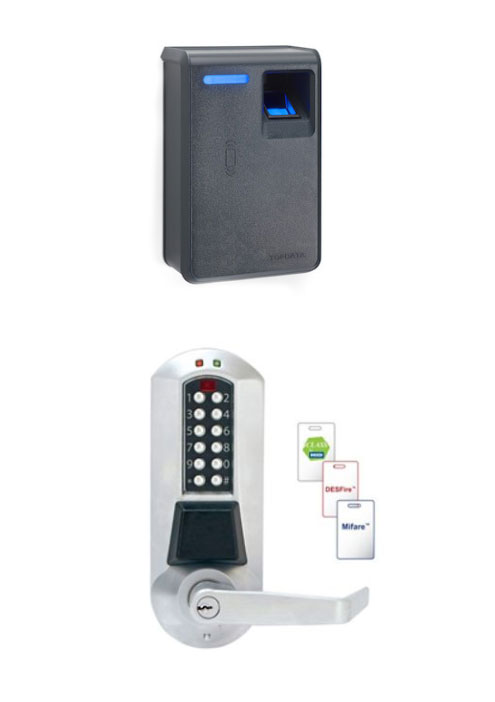

Electronic access control uses computers to solve the limitations of mechanical locks and keys, and a wide variety of credentials can be used to replace these keys. The system grants or denies access based on the credential presented. Once access is granted, the door or turnstile is unlocked for a predetermined time and the operation is logged in times on the order of 350ms. When access is denied, the door or turnstile remains locked and the access attempt is logged. The system also monitors and records the alarm if any attempt is made to force entry, or if the door is kept open for too long after being unlocked. In the event of an incident in the building, the fire control center sends a signal to the access control system, which automatically releases all access-blocking equipment on the established evacuation route.
There are three types of authentication information: something the user knows, for example a password, passphrase, or PIN; something the user has, such as a smart card or keychain; or something the user is, such as a fingerprint, verified by biometric measurement.
The components of an access control system include: an access control panel (also known as a controller); access blocking equipment, such as a door, turnstile, turnstile, parking gate or gate, elevator, or other physical barrier; a credential reader, installed near the entrance to the blocking equipment. In cases where egress is also controlled, a second reader is used on the opposite side of the entrance; a mechanical or electromagnetic locking system for access doors; a magnetic door or turnstile sensor that monitors its position and locking status; exit request (REX) devices to allow egress.
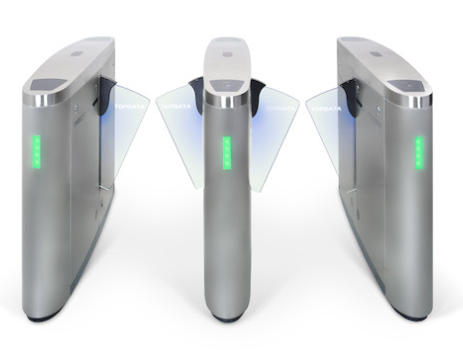
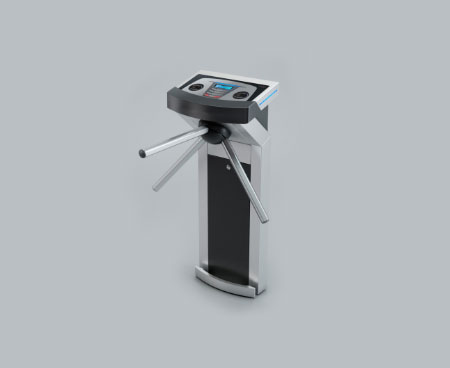
Access control decisions are made by comparing the presented credential to the existing ones in the access control system's bank. This search can be done by a host or server, by an access control panel, or by a reader.
Metal Detectors
A metal detector is an electronic device that has the ability to detect the presence of metal nearby. They are useful for finding metal inclusions hidden inside objects or metal objects buried underground. They usually consist of a handheld unit with a sensor probe that can be swept across the ground or other objects. If the sensor gets close to a piece of metal, this is indicated by a change in tone in the headset or by a needle moving in an indicator. Usually the device provides some indication of distance; the closer the metal, the higher the tone in the headset or the louder the needle or the more LEDs are lit. Another common type are stationary metal detectors used for security screening at access points in prisons, courts, and airports to detect metal weapons hidden on a person's body. The main types of metal detectors are: beat frequency oscillation, very low frequency, pulse induction, and industrial.
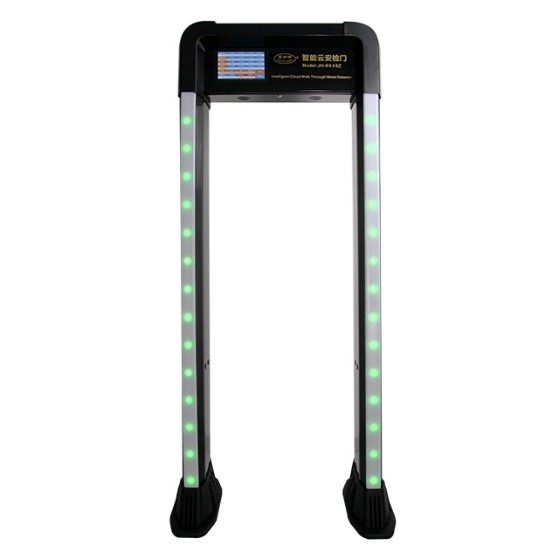
The simplest form of a metal detector consists of an oscillator producing an alternating current that passes through a coil producing an alternating magnetic field. If a piece of electrically conductive metal is close to the coil, currents will be induced in the metal and this will produce a magnetic field of its own. If another coil is used to measure the magnetic field, acting as a magnetometer, the change in magnetic field due to the metal object can be detected.
The first industrial metal detectors were developed in the 1960s and were widely used for mineral prospecting and other industrial applications. Uses include landmine detection, white and firearms detection, especially in airport security, geophysical prospecting, archaeology and treasure hunting. Metal detectors are also used to detect foreign bodies in food and in the construction industry to detect steel reinforcing bars in concrete and pipes and wires buried in walls and floors.
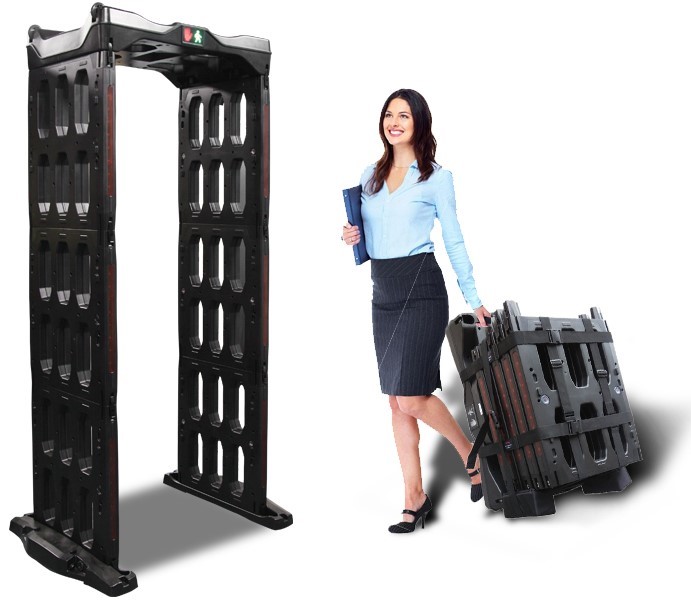
QUARTZO Defense Engineering offers complete solutions for municipalities, government agencies, condominiums, schools, hospitals and private companies of various sizes and segments of activity that seek to install intelligent security systems and access control, to monitor in real time the flow of people, vehicles or and objects circulating on their premises, restricted areas and other environments that are sensitive from the point of view of security, through equipment and software for security management and decision making. It also has the latest generation of professional metal detectors, with models for manual use or in the form of access gates, in fixed or mobile versions, and our mobile gate is light and can be dismantled easily and quickly by a single person. QUARTZO has innovative and flexible equipment, integrated in real time or not, according to the customer's needs. Come and see our product line for a customized project for electronic security, people access control and intelligent monitoring.
Forensic Investigation
Forensic science is the set of processes and techniques used to investigate crimes that makes use of the most varied of existing sciences, including physics, chemistry, biology, anthropology, entomology, odontology, criminology, psychology, and pathology. The specialized professional who uses these sciences to solve crimes is called a forensic expert or criminal expert, and may have a degree or a post-graduate degree in any of these sciences. In the criminalistics area it is very common for there to be conflicts between information from the parties involved, making conclusions and judgments difficult. The use of forensic investigation and criminal expertise techniques has as its main objective the verification of the veracity of this information in order to provide investigators, judges and others involved in the case with clarifications about the facts that occurred. The techniques employed allow it to be possible to identify, with relative precision, whether or not a person, for example, was at the scene of the crime from a simple fingerprint or biological trace found at the crime scene. In some situations, forensic specialists use the technology of DNA testing, the analysis of the authenticity of works of art and documents, or the examination of adulterated fuel, among other analyses. Precise clarification is of paramount importance to the whole process, it is through this that proper sentences are applied and, above all, justice is done.
"In crime investigations, the primary focus of the forensic professional is to confirm the authorship or rule out the involvement of the suspect(s)" (Chemello, 2006)
There are several composites or subcategories of forensic investigation. Technology advances rapidly and the information gathered is increasingly accurate. Rare are the cases in which one cannot find additional information to contribute to the investigations. It is worth mentioning, however, that even with all the tools and techniques available in the market, the decisive factor in obtaining information is the creativity and experience of the investigators. Among the sciences mentioned above, the following stand out:
Forensic chemistry - A branch of the forensic sciences focused on producing material evidence for justice by analyzing various substances in matrices, such as licit and illicit drugs, poisons, accelerants and fire residues, explosives, firearm discharge residues, fuels, paints and fibers. Although forensic chemistry is a very important subject and is increasingly gaining interest in scientific society, its application in the field of criminalistics is still underdeveloped in our country.
Forensic Physics - According to professor and criminal expert Dr. Osvaldo Negrini Neto, Forensic Physics is the part of Physics destined to the observation, analysis, and interpretation of physical - natural - phenomena of judicial interest. Concepts of mechanics, thermology, acoustics, and optics are used by applied physics in the interest of criminalistics, or simply forensic physics, to help clarify possible criminal action related to traffic accidents, gunfire, falls or involuntary movements, document authenticity, and identification of people. Often using sophisticated techniques such as spectroscopy and electron microscopy, the routine tasks of a forensic physicist involve analysis of fragments and objects found at sites of violent death or vehicle collisions, analysis of projectiles and their trajectory, studies of possible positions of the victim at the time of the crime, or examination of documents or of handwriting and voice for identification of suspects.
Forensic Biology - Forensic Biology uses biological traces as evidence to solve crimes. All biological traces can be used, such as hair strands, skin cells present in the victim's fingernail, semen, plants or even insects that are visiting a body. Unpacking this category, we can find a number of extremely important ramifications to the process, such as:
The Forensic Entomology is the part of Forensic Biology that analyzes the presence of insects and other arthropods at crime scenes. Usually, in these cases, the study tries to understand the decomposition process of a corpse to identify how long ago the crime occurred. In addition, identifying the arthropod species helps to determine where everything happened.
The Forensic Toxicology aims to analyze substances that may be related to a particular crime. In these cases, the professional expert in the field is concerned with collecting data present in organs and body fluids and analyzing the suspected substances.
The Forensic hematology is focused on blood and can follow two lines: one that helps identify those involved by DNA analysis, and one that helps reconstruct the crime story from the analysis of how the blood is disposed at the scene.
The Forensic Genetics is the part responsible for DNA identification and is responsible for identifying criminals and victims. The materials taken as samples and most often used for this analysis are blood, semen, hair strands, saliva, and the remains of victims.
The Forensic Botany analyzes plant traces that can identify the crime scene and the presence of people. Pollen grains from a plant present on a suspect, for example, can confirm the presence of that suspect at the scene, linking him or her to the crime.
Computer forensics - involves the study and pointing to evidence and data in crimes contained in the digital and online realm. Every day hundreds of people are victims of scams and have precious information copied. This type of crime has long been difficult to solve because of the great difficulty in tracing people and organizations through the Internet. Fake or stolen accounts, IP blockers, spyware and the most diverse malware are part of the offending arsenal of the crooks. Experts and other professionals in the field have as tools to combat these activities a series of software and hardware that are added to allow a complete investigation of electronic devices, recovery of deleted files, provision of passwords for encrypted files, hardware and e-mail analysis, intelligent search of keywords in all database files, etc.
This brief summary about forensic investigation and criminal forensics and presentation of its subcategories allows you to see how extensive and complex the subject is. There are many ways and instruments that exist to verify the authenticity of the information available in a criminal case. Several forensic engineering materials and equipment developed in recent years have sought to facilitate the work of forensic experts, expanding their capacity, increasing the accuracy of the results and the speed of analysis and delivery of the results found.
Documentscopy - by means of advanced technologies and precise and meticulous techniques, the function of the documentscopy equipment is to verify the authenticity, authorship, means of production and dating. The use of this technology is very frequent for checking money bills and official documents, quickly and efficiently accusing forged documents.

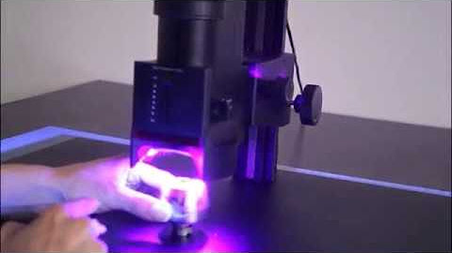
Touch DNA - the DNA extraction system, also known as Touch DNA, is a powerful forensic investigation tool with advanced capabilities for detecting DNA traces even in very small samples. This equipment makes it possible to examine weapons, locations, and clothing involved in crimes. Generally composed of a long-range microscope, special lighting to facilitate the visualization of traces of skin and blood, display, and control panel, the Touch DNA system proves to be a practical and efficient option for the daily life of forensic professionals
Laser Forensics - the use of laser systems has revolutionized the forensics market because of the speed with which information is found. The operation of the equipment is simple, fluorescence occurs when a material absorbs light of one color and re-emits it in a different color. A material can be illuminated in blue or green and then viewed with filter glasses that only pass orange or red. In this way, traces of semen, blood, gunpowder, and various other materials can be easily identified
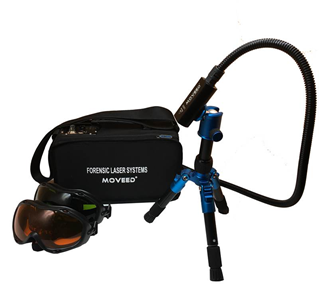
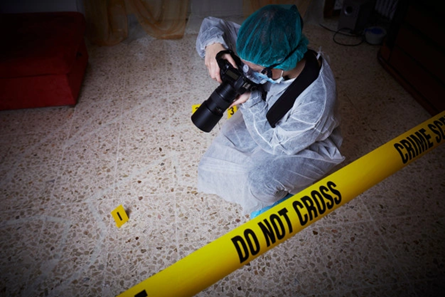
Specialized photography - without a doubt, the most important part of an investigation is the recording and documentation of information, especially the physical evidence from the crime scene. In most cases, the entire process is based on the items, samples, and specialized photographs taken at the scene. For the information to be accurate, the equipment used needs to be efficient, effective and of high quality, especially when the product is a high definition technical photograph. To this equipment, the can add a UV lighting system, infrared and wifi synchronization in order to enable the extraction of as much information as possible from the crime scene, including fingerprints, smudges and small marks on any type of surface.
QUARTZO Defense Engineering makes available a portfolio of materials, instruments and equipment for the practice of forensic investigation in its most varied categories. We are proud to count on a range of specialized supply partners, internationally recognized for the quality of their products, in order to adequately serve our customers.
